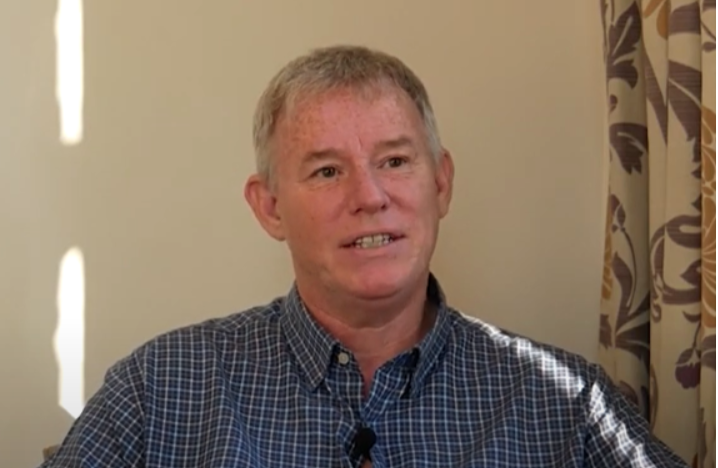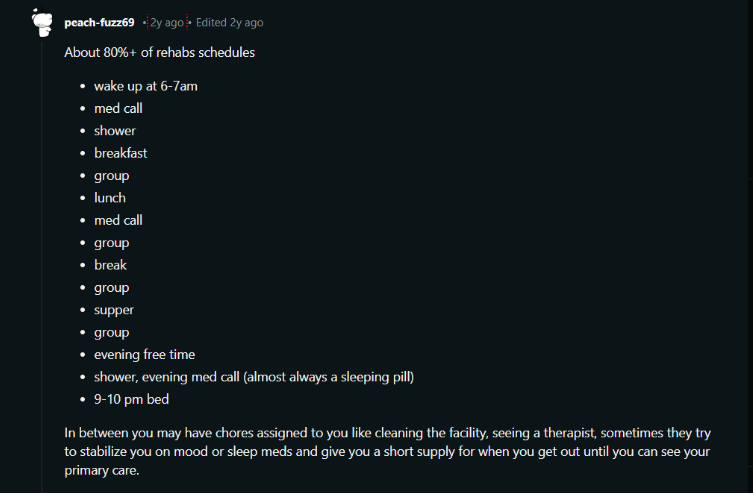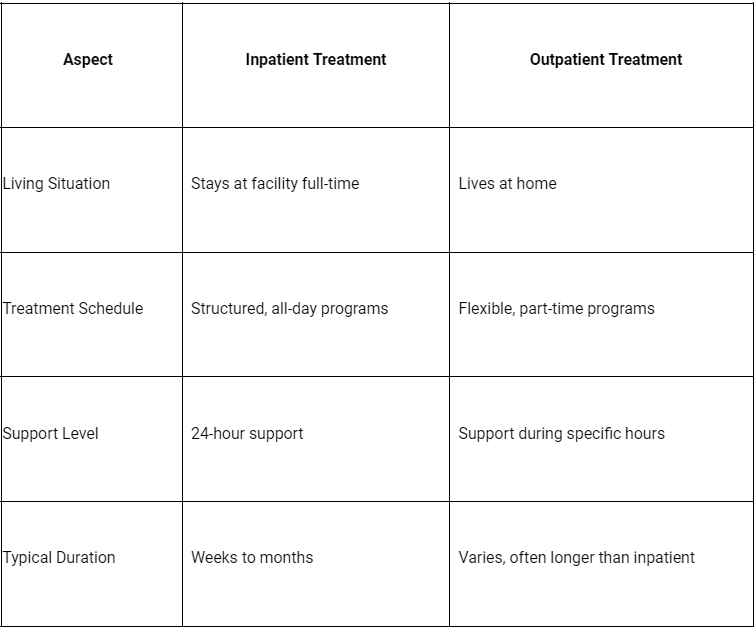Inpatient drug rehab is a residential treatment program where individuals stay at a facility for a designated period. Orange County Drug & Alcohol Rehab Center offers one of the best inpatient drug rehab in Orange County, CA. Inpatient drug rehab ensures patients receive intensive therapy and support for substance addiction recovery. By living at the facility, patients receive 24-hour care and supervision. This helps to address both the physical and emotional aspects of addiction. The National Institute on Drug Abuse (NIDA) reported something. They said that inpatient treatments are effective for those with severe substance use disorders. It also is effective in co-occurring mental health conditions.
The Substance Abuse and Mental Health Services Administration also found in a study that inpatient programs have a higher success rate compared to outpatient programs. They found that 60% of individuals in inpatient rehab programs remain sober for over a year, while the success rate of outpatient programs is only 40%. A report from the American Addiction Centers also highlights that inpatient rehab can reduce the risk of relapse by providing a structured environment and continuous medical support. This is crucial during the early stages of recovery.

Inpatient programs provide a multidisciplinary approach. They involve doctors, therapists, and other specialists. They work together to create personalized treatment plans. This ensures that each person receives the care that best suits their specific needs.
A study published in the Journal of Substance Abuse Treatment found that patients in inpatient rehab programs are more likely to complete treatment. More than those in outpatient programs. They have a completion rate of 65% versus 45%, respectively. Staying in rehab increases the chances of long-term sobriety. It also helps individuals build a solid foundation for a healthier life.
For those with acute or long-term substance use issues, a 90-day inpatient rehab program can be particularly effective. Research indicates that longer treatment durations are associated with better outcomes. The National Institute on Drug Abuse recommends at least 90 days of treatment for significant improvement.

This is David, a recovering addict who started his recovery journey three years ago after struggling with addiction for many years. He relapsed several times, seeking help at the Priory, an inpatient rehab he jokingly notes was conveniently located at the end of his road. He spent 28 days at the Priory, where he found a safe, supportive environment and connected with peers facing similar struggles. Today, David has successfully rebuilt his life and relationships. He has recovered relationships with his seven children and his wife.
These programs are designed to offer intensive support and a higher level of care. With the right help, recovery is not only possible but also attainable. In fact, there's a study in the Archives of General Psychiatry. They found that individuals who completed a 90-day inpatient program had a 68% reduction in substance use. We offer the best personalized programs in Orange County, CA that is tailored to your need. Contact us at 704 5555-0127.
What is Life Like in an Inpatient Rehab?
Life in an inpatient rehab centers around building a safe and sober environment. Patients can expect structured routines throughout the day.
Morning Activities:
- Wake-up calls are early to promote healthy habits.
- Breakfast is followed by a morning meeting or meditation session.
Therapies and Treatments:
- Individual Therapy: Patients meet with counselors to discuss their progress.
- Group Therapy: Sessions provide a sense of community and shared experiences.
- Specialized Therapies: Some centers offer art or music therapy.
Amenities and Comfort:
- Clean and comfortable living areas.
- Recreational activities like gym access or nature walks.
- Nutritious meals provided throughout the day.
Afternoon Schedule:
- Workshops on coping skills and relapse prevention.
- Sometimes, there’s family therapy sessions to involve loved ones.
Evening Routine:
- Dinner followed by another group session or an educational lecture.
- Free time to relax, reflect, or engage in sober activities, like reading or games.
This redditor shared his personal experience of what a regular day in rehab is like. He mentions that there are things that happen in between. Inpatient rehab aims to create a sense of community and support. This helps patients focus on their sobriety and prepares them for life after rehab. We offer personalized programs tailored to your need. Contact us at 704 5555-0127.

What are the Differences Between Inpatient and Outpatient Treatment
Inpatient treatment involves staying at a rehab facility 24/7. Patients live at the center during their entire program. This type of treatment offers a structured environment with round-the-clock support.
Outpatient treatment allows individuals to live at home and continue with daily activities. Patients attend therapy sessions during the day and return home afterward.
Inpatient facilities are best for those needing intensive and continuous care. They provide a highly structured schedule that includes various therapies. They also have activities and medical supervision. This helps isolate patients from environments that may trigger substance use.
Outpatient programs, on the other hand, are more flexible. and can be suitable for those with milder addictions or obligations like work or school. They offer varying levels of care. This includes Partial Hospitalization Programs (PHPs) and Intensive Outpatient Programs (IOPs). We offer personalized programs tailored to your need. Contact us at 704 5555-0127.

What are the Benefits of Inpatient Drug Rehab?
Inpatient drug rehab offers supervised care, a structured environment, and many more benefits. Patients often prefer inpatient rehab because of its comprehensive approach to recovery. Some of its benefits are:
24/7 Supervised Care: Patients receive round-the-clock care from medical professionals. This ensures their safety during detox and recovery. A study by the National Institute on Drug Abuse (NIDA) was conducted. They mentioned that continuous supervision during inpatient rehab reduces the risk of relapse. It also reduces medical complications.
Structured Environment: Inpatient rehab provides a structured routine. This helps patients focus on their recovery without distractions. There's a study published in the Journal of Psychoactive Drugs. They found that a structured environment in inpatient rehab contributes a lot. Especially to higher treatment retention rates and better long-term outcomes.
Supportive Community: Those who are going through the same struggles foster a sense of community and support. Research indicates that peer support in rehab settings can enhance motivation. It also increases the likelihood of sustained recovery.
Individual and Group Therapy: These sessions help address the underlying issues of addiction. They also give patients the tools to cope with cravings and triggers. The American Psychological Association (APA) has a report. They say that combining individual and group therapy leads to more effective treatment outcomes
Medical Assistance: Access to medications and medical treatments helps manage withdrawal symptoms. They also help with co-occurring mental health conditions. The Substance Abuse and Mental Health Services Administration (SAMHSA) highlights something. They mention that integrated treatment for co-occurring disorders in inpatient rehab is crucial. This is because it improves both mental health and substance use outcomes.
Nutritional Counseling: Proper nutrition supports overall health and can aid recovery. There's a study in the journal Substance Abuse Treatment, Prevention, and Policy. They found that nutritional counseling in rehab programs can improve physical health. It also reduces relapse rates.
Experiential and Recreational Therapies: Activities such as yoga and sports can improve well-being. The International Journal of Yoga Therapy backs this up. They mention that yoga and other recreational therapies in rehab can reduce stress. It can also improve mood and enhance overall well-being.
Comprehensive Aftercare Plans: Patients develop an aftercare plan to maintain sobriety. This includes outpatient care and support group meetings. A study by the National Institute on Alcohol Abuse and Alcoholism (NIAAA) supports this. They say individuals who engage in aftercare programs are more likely to maintain long-term sobriety.
How Does Inpatient Rehab Work?
Inpatient rehab is a structured program which offers 24/7 supervised care with a focus on supported detox and various therapies. Here’s an overview of how inpatient rehab work:
Admissions and Assessment
The admissions process starts with an initial assessment. This assessment helps determine the specific needs of the individual. Medical professionals review the patient's health and addiction history. This includes both physical and mental evaluations. This helps in creating a personalized treatment plan that addresses their unique conditions.
During this stage, any existing medical issues are identified. The necessary medications are also prescribed to manage them. The assessment also helps in deciding the appropriate detox strategy and the types of therapies needed.
Detoxification Stage
Detoxification, or detox, is often the first major step in inpatient rehab. This process involves removing the addictive substances from the body under medical supervision. Medical detox is vital because it helps manage withdrawal symptoms. These symptoms can be severe and potentially life-threatening, so having medical staff on hand is crucial.
Medications may be given to ease withdrawal symptoms and make the detox process more bearable. The duration of detox varies but may last from a few days to over a week, depending on the substance and severity of addiction.
Rehabilitation and Therapy
After detox, the next phase involves rehabilitation and therapy. This phase aims to address the behavioral aspects of addiction.
Different therapies are offered, including individual therapy, group therapy, and family therapy. These sessions help individuals understand their addiction. To cope with triggers and develop healthier habits. Experiential and recreational therapies, such as art therapy or outdoor activities, may also be part of the program. Nutritional counseling is often included to support physical health.
The rehab phase typically lasts around 30 days but can extend to 60 or 90 days, depending on the individual's needs. An aftercare plan is also created to ensure continued support after leaving the facility. This might involve outpatient therapy, support groups, and other resources.
Does Inpatient Drug Rehab Work?
Inpatient drug rehab has been shown to be effective for many people. Especially those struggling with substance use disorder or alcohol addiction. This type of treatment involves staying at a facility full-time, receiving 24-hour care and supervision. A study by the National Institute on Drug Abuse (NIDA) reports something. They said that individuals who take part in inpatient rehab programs are more likely to complete treatment. They also maintain long-term sobriety compared to those in outpatient programs. To know more, reach out to us at 704 5555-0127.
Studies show that the structured and supportive environment of inpatient rehab helps. Especially for individuals who focus on recovery. The cut of outside distractions and access to immediate medical and psychological support are key factors. A study published in the Journal of Substance Abuse Treatment found something. They said that the structured environment of inpatient rehab reduces the risk of relapse during the early stages of recovery.
This redditor mentions how going to an inpatient rehab saved her. He mentioned that it was extremely helpful and credits it a lot with his sobriety.
Treatment programs often include individual and group therapy, medical care, and educational sessions. These components address not only the addiction but also any co-occurring disorders. This includes co-occurring mental health conditions. The Substance Abuse and Mental Health Services Administration (SAMHSA) backs this up. They said that integrated treatment for co-occurring disorders leads to better outcomes.
A significant benefit is the ability to customize treatment plans. Programs are tailored to address the type of addiction and the specific needs of each individual. Research indicates that personalized treatment plans improve the effectiveness of rehab programs. There's also a study in the journal Addiction Science & Clinical Practice. It shows that tailored interventions lead to higher rates of treatment completion. It also showed sustained recovery.

How Much Does Inpatient Drug Rehab Cost?
The cost of inpatient drug rehab ranges from $10,000 to $30,000. This can vary widely based on several factors, such as the length of stay, the type of treatment provided, and the amenities offered. If you need an affordable but high quality inpatient drug rehab, reach out to us at 704 5555-0127.
- 30-Day Inpatient Program: Typically ranges from $10,000 to $30,000.
- Intensive and Longer Programs: These can be significantly more expensive. This is due to the extended duration and added services.
Included Therapies and Counseling
Inpatient rehab generally includes a variety of counseling and therapeutic services, such as:

Medication-Assisted Treatment (MAT)
For some individuals, medication-assisted treatment is crucial for successful recovery. This treatment involves the use of medications. Examples are methadone or buprenorphine to manage withdrawal symptoms and reduce cravings. The costs for MAT are as follows:

The cost of inpatient rehabilitation can vary based on several factors. It includes program length, intensity, and types of therapies. It's also based on whether medication-assisted treatment is needed. Here is a consolidated view:

What is the Phase Four of the Intensive Outpatient Counseling Program at Orange County Drug & Alcohol Rehab Center?
Phase Four of our drug treatment program entails an intensive outpatient counseling program. As you begin to feel more like yourself again without substances, you’ll need to go through an outpatient program. Especially one that will help you get to the root of your addiction.
To learn more about our outpatient counseling program and how you or a loved one can become admitted into our drug treatment program, reach out to us.
What To Expect With Phase Four Of Our Drug Treatment Program
In Phase Four, you will begin to learn how you can live a life without drugs and alcohol. While the previous phases detailed detoxing your body and your mind from substances, in Phase Four, we’ll help you with those mental hurdles. Add those unresolved emotions that you might be struggling to overcome.
We’ll help you break free of those constraints as well as help you achieve a better awareness of your own happiness with your life. When you enter Phase Four, you’ll work with a chemical dependency counselor who can help you learn how to live in the present.
How Does Phase Four Work?
Phase Four is the final step of our drug treatment program. As we enter Phase Four, you’ll start a unique form of therapy. One that will help you handle any type of mental state you might find yourself in whether it’s an easy or a hard day.
Our philosophy at Orange County Drug & Alcohol Rehab Center is based on drug and alcohol counseling needs to dive into an individual’s past. This is to fully understand what has drawn them to drugs in the first place. The negative emotions that someone might exhibit is what drives a person to want to become happier with substances. We’ll help you look toward a future that is healthier and happy with the help of a trained professional.
Why You Should Select Orange County Drug & Alcohol Rehab Center
Located in California, Orange County Drug & Alcohol Rehab Center is a premier facility dedicated to guiding you towards long-term recovery. As a family-owned center, we pride ourselves on offering a unique rehabilitation experience. We address both physical and mental addiction. Our four-phase drug treatment program is designed to help you achieve a healthier and happier life free from substances.
Why Choose Us:
- Family Owned - We offer a personal touch and a compassionate approach to your recovery journey.
- PhD Level Clinical Director - Our program is overseen by an expert with a doctoral level of expertise.
- Masters Level Therapists Specialized in PTSD and Trauma - Our therapists are specialized in treating PTSD and trauma. This ensures comprehensive care.
- State Licensed and Joint Commission Accredited - We meet the highest standards of care and safety, giving you peace of mind.
- Legitscript Certified - Our certification assures that our practices meet the rigorous standards. Both legitimacy and quality in addiction treatment.
Choose Orange County Drug & Alcohol Rehab Center for a supportive, professional, and accredited path to a substance-free life.
Any questions? Contact us anytime
Contact Us
We will get back to you as soon as possible
Please try again later
MEDICATION ASSISTED TREATMENT
We offer MAT Medication Assistant Treatment, both Maintenance and Anti Craving. Our Technological, Medical and Clinical treatment approach mitigates and heals alcoholism, opiate dependency, benzodiazepine dependency and the underlying causes and conditions.
ABOUT OC REHAB CENTER
Orange County Drug and Alcohol Rehab Center is located at Irvine Blvd Tustin, CA. We have a facility that you will go through when you become admitted to our drug treatment facility. In this part of the country, the weather is beautiful; most of the year it is sunny, and it creates the perfect atmosphere to recover from your alcohol or drug addiction. If you or a loved one are suffering from substance abuse, then learn more about our drug treatment facility to see if we’re the right program for your recovery.
